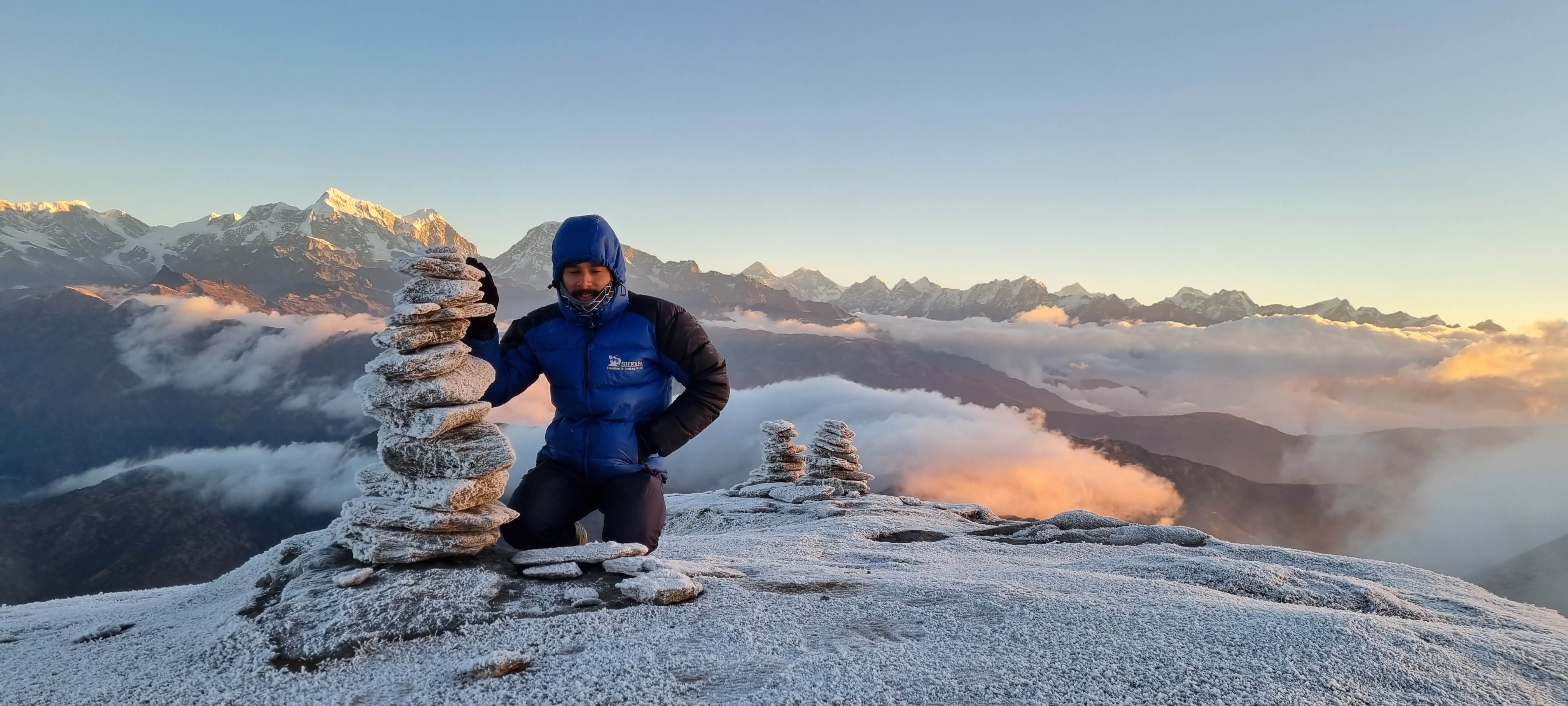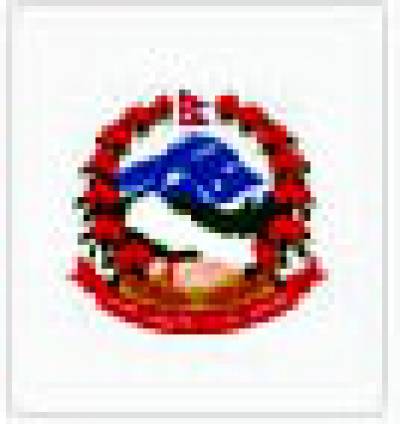PIKEY PEAK TREK 9 DAYS
The Pikey Peak Trek is a hidden gem in the Everest region, offering trekkers an exceptional combination of stunning mountain views, cultural immersion, and an off-the-beaten-path experience. Spanning over 9 days, this trek takes you to some of the most scenic spots, all while remaining relatively untouched by the typical tourist crowds.
Your journey begins with your arrival in Kathmandu, where you’ll be greeted and transferred to a local shared jeep for the drive to Dhap. The drive itself offers an introduction to Nepal’s rural landscape, with lush green valleys, terraced fields, and distant peaks on the horizon. Upon reaching Dhap, you’ll begin your trek, making your way through beautiful forests and small villages, all leading you to Jhapre, a small Sherpa village where you’ll spend the night and acclimatize to the altitude.
The next day, you’ll set out for Pikey Peak Base Camp. As you make your way through scenic trails, you’ll be surrounded by views of towering Himalayan peaks, including Everest, Makalu, and Kanchenjunga. This is a perfect place for acclimatization, and the landscape along the way is absolutely stunning, with dense forests, alpine meadows, and traditional Sherpa settlements.
On the following day, you’ll summit Pikey Peak (4,065 meters), which offers one of the best panoramic views of the Himalayas. From the summit, you can see majestic peaks like Mount Everest, Lhotse, Makalu, and Kanchenjunga in the distance, making the climb truly rewarding.
After descending from Pikey Peak, you’ll trek towards Junbesi, a picturesque Sherpa village. Here, you’ll have the opportunity to explore the Thuptenchholing Gompa, a significant Buddhist monastery known for its peaceful atmosphere and beautiful surroundings.
From Junbesi, you’ll make your way to Phaplu, where you’ll take a shared jeep back to Kathmandu. After a scenic drive back to the capital, you’ll be dropped off at your hotel, and the next day, you’ll be transferred to the airport for your final departure.
The Pikey Peak Trek is an ideal trek for those looking to explore the lesser-known areas of Nepal while still experiencing some of the most breathtaking views the country has to offer.
ITINERARY
Day 1 : Arrival in Kathmandu (1,350m) & Transfer to hotel.
Upon your arrival in Kathmandu, you will be greeted by our representative at Tribhuvan International Airport and transferred to your hotel. You’ll have some free time to rest and acclimatize to the city’s atmosphere. Depending on your arrival time, you can explore nearby areas or relax at the hotel. The evening is reserved for a welcome dinner and an orientation briefing about the trek.
Day 2 : Drive from Kathmandu to Dhap (2,932m) – Duration: 9-10 hours.
After breakfast, you'll embark on a scenic drive from Kathmandu to Dhap. The drive takes about 9-10 hours, passing through the lush landscapes of rural Nepal, with views of terraced fields, rivers, and small villages. The road is a mix of paved and dirt tracks, so be prepared for a long but scenic journey. Upon arrival in Dhap, you will check into a local lodge for an overnight stay.
Day 3 : Trek from Dhap to Jhapre (2,829m) – Duration: 5-6 hours.
Today marks the beginning of your trekking adventure. After breakfast, you will start your trek from Dhap to Jhapre, a charming village located at 2,829 meters. The trek involves a gradual ascent through forests, farmlands, and scenic trails. Along the way, you’ll enjoy spectacular views of the surrounding mountains. Upon reaching Jhapre, you'll settle into a local lodge and rest for the night.
Day 4 : Trek from Jhapre to Pikey Peak Base Camp (3,640m) – Duration: 5-6 hours.
Your trek today takes you from Jhapre to Pikey Peak Base Camp. As you ascend, you’ll be rewarded with panoramic views of the Everest, Makalu, and Kanchenjunga ranges. The trail passes through picturesque villages, lush forests, and alpine meadows. After reaching the base camp, you’ll be surrounded by the breathtaking mountain scenery. Overnight stay in a local lodge.
Day 5 : Hike to Pikey Peak and trek to Junbesi (2,700m) – Duration: 8-9 hours.
An early morning hike to the summit of Pikey Peak (4,065m) offers one of the most stunning sunrise views of the Everest, Kanchenjunga, and other surrounding peaks. After enjoying the magnificent views, you'll trek down to Junbesi, a beautiful Sherpa village located at 2,700 meters. The trek from Pikey Peak to Junbesi takes about 5-6 hours, and you’ll be surrounded by lush forests and villages as you descend. You will spend the night in Junbesi.
Day 6 : Exploration trip to Thuptenchholing Gompa (2,920m) – Duration: 5-6 hours.
Today is dedicated to an exploration trip to the Thuptenchholing Gompa, a famous Buddhist monastery in the region. The hike to the monastery takes around 5-6 hours, offering beautiful views of the surrounding landscapes and peaks. The gompa is a peaceful retreat, providing insight into the local Buddhist culture. After visiting the monastery, you’ll return to Junbesi for an overnight stay.
Day 7 : Trek from Junbesi to Phaplu (2,469m) – Duration: 5-6 hours.
On this day, you will trek from Junbesi to Phaplu, which takes around 5-6 hours. The trek takes you through forests, rivers, and local villages, providing a peaceful walk through the heart of the Solu Khumbu region. Upon arrival in Phaplu, you’ll rest and enjoy the local culture. Overnight stay in a lodge.
Day 8 : Drive from Phaplu to Kathmandu – Duration: 10-12 hours.
Today, you will drive back to Kathmandu from Phaplu. The journey takes about 10-12 hours, retracing the road back through picturesque landscapes, rivers, and small settlements. Upon your arrival in Kathmandu, you will check into your hotel and have some free time to relax or explore the city. The evening is free for shopping, relaxation, or celebrating the completion of your trek.
Day 9 : Transfer to Tribhuvan International Airport.
On your final day in Nepal, you will be transferred to Tribhuvan International Airport for your departure flight. If you have time before your flight, you can do some last-minute shopping or sightseeing in Kathmandu. We hope you leave with unforgettable memories of your incredible journey in the Himalayas!
SERVICES
Cost Included In Your Package
- Airport Transfers (Arrival & Departure): Private vehicles are arranged to transport you comfortably between the airport and your hotel in Kathmandu.
- Accommodation in Kathmandu: Two nights of standard twin-sharing accommodation in Kathmandu, with breakfast provided to ensure a good start to your trek.
- Experienced Local Guide: You will be guided by a highly experienced, government-licensed, English-speaking Sherpa guide. The guide’s meals, accommodation, insurance, flights, and equipment are all covered for the duration of the trek.
- Meals During the Trek: Enjoy three delicious meals a day (breakfast, lunch, and dinner), featuring local and nutritious options to keep your energy high during the trek.
- Sherpa Porters: Strong, helpful Sherpa porters will carry your belongings (one porter for two trekkers). Their food, accommodation, salary, insurance, and necessary equipment are fully provided.
- Trekking Permits: All necessary trekking permits, including Sagarmatha National Park Fees and a TIMS card (Trekking Information Management System), are included in your package.
- Accommodation During the Trek: Stay in standard trekking lodges or tea houses along the route, providing comfortable resting places after long days of trekking.
- Assistant Guide for Larger Groups: If your group has eight or more participants, an additional assistant guide will be included to ensure smooth group management and safety.
- Trekking Gear: Essential equipment like a sleeping bag, down jacket, duffel bag, and walking poles will be provided for your convenience, which should be returned at the end of the trek.
- Transportation: Shared local jeep transportation is arranged for your travel between Kathmandu and Dhap, as well as from Phaplu back to Kathmandu.
- Fresh Fruits: Seasonal fruits are provided every evening after dinner, offering a refreshing and healthy way to end the day.
- Certificate of Appreciation: Upon successfully completing the trek, you’ll receive a Sherpa Teams’ Certificate of Appreciation as a memento of your adventure.
- Free Hiking T-shirt: You will receive a complimentary Sherpa Teams hiking T-shirt as a token of appreciation for joining the trek.
- Oximeter for Health Monitoring: An oximeter will be provided during the trek to measure your oxygen levels and pulse, helping you monitor your health and prevent altitude sickness.
- Emergency Rescue Assistance: In case of emergency health situations, we will assist in arranging emergency rescue operations, covered by your travel insurance.
- Government & Local Taxes: All applicable government, local taxes, and official expenses are included in your package, with no hidden costs.
Cost Excludes
- Nepal Entry Visa Fee: The visa for Nepal is easy to obtain upon arrival at Tribhuvan International Airport in Kathmandu. The fees are as follows: $30 USD for a 15-day visa, $50 USD for 30 days, and $125 USD for 90 days.
- Extra Nights Accommodation & Meals: Any additional accommodation and meals outside the trek dates or before/after the trek are not included in the package.
- International Airfare: The cost of international flights to and from Nepal is not covered.
- Beverages & Extra Food: All alcoholic and non-alcoholic drinks, including tea, coffee, hot chocolate, soup, mineral water, extra snacks, and drinks you purchase along the way or in tea houses during the trek, are not included.
- Travel Insurance: Travel insurance is essential for the trek and must cover emergency high-altitude rescue and evacuation. Insurance costs are the responsibility of the trekker.
- Personal Clothing & Trekking Gear: Any personal clothing or trekking equipment you require is not included in the cost. However, some essential gear like sleeping bags, jackets, and walking poles can be provided.
- Additional Costs for Itinerary Changes or Delays: Any additional costs incurred due to itinerary modifications or delays caused by factors such as weather, illness, changes in government policies, strikes, or any other unforeseen circumstances are not included.
- Gratuities for Guides and Staff: Tipping for guides, porters, and other trekking staff is customary in Nepal and not included in the cost. It is recommended as part of Nepali culture and depends on your satisfaction with the service provided.
- Any Other Expenses: Any expenses not mentioned in the "Cost Includes" section of the itinerary are excluded from the package price. This includes extra activities or personal purchases you might choose to make.
- NOTE: If you return earlier from the trek due to sickness or any problem, the money you paid for the flight, hotel, mountain room, food, etc. is nonrefundable, and you will need to bear the expenses for the hotel, food, etc. in Kathmandu yourself.
EQUIPMENTS
The following information will give you some idea about what you need to bring for the trek. It is important you do not forget the essential items, as this will determine your comfort and safety on the trek. Equally important is that you do not burden yourself with unnecessary equipment on the trek.
General
- All season sleeping bag and down Jacket (we can provide if you need it, but has to be returned after the trek)
- Duffle bag ( Sherpa Expedition & Trekking provide duffle bag during the trek but has to be returned after the trek)
- A wind and waterproof thin layered jacket (a must-have for morning and evenings above 3,000m)
- Daypack
Upper Body- Head / Ears / Eyewear
- A pair of half gloves
- A warmer hat that covers the ears
- Sunglasses
- Neckwarmer
- Sunscreen (35 to 60 SPF)
- Headlamp and an extra set of batteries
Hands
- A pair of half gloves for walking poles(if you prefer)
- Warmer shell gloves and liner
Upper Body
- long sleeve t-shirts
- Thermal tops
- wool jacket or pullover
- Sports bras for women and girls
- Water and windproof shell jacket
Lower Body
- Thermal underwear (especially trousers)
- windproof and waterproof trousers
- warmer trousers
- Comfortable trekking pants
- Extra casual sport pants
Footwear
- A pair of good waterproof trekking boots
- Pair of sandals
- 4-5 pairs of woolen socks
- Sock liners
- Light shoes and sneakers
- First Aid Kits and Medicines
- Assorted adhesive bandages (fabric preferred)
- Blister treatment cream or similar
- Insect / anti-itch ointment
- Ibuprofen or other pain-relief medication
- Diamox (125mg to 250mg tablets for altitude sickness)
- Warps, splints, and wound coverings butterfly bandage
- Water purifying pills
(Note our company guide will carry the medicines and first aid kits during the trek. However, we recommend you bring your personal first-aid kit as well)
Miscellaneous - but must useful on the trek
- 4 passport size photos with original passport
- Water bottle & filter
- Flight details (please make a copy and leave one pic at our office in KTM because in case you want to change your flight date)
- Bathroom kit (conform, should be included toilet paper, plastic bags, hand wipes, towel, and soap, etc.)
Extra things
- Comfortable trekking poles
- Quality energy dry foods (up to you)
- Power bank and music players
- Camera (memory card, chargers, and extra batteries)
GOOD TO KNOW
Good to Know About Pikey Peak Trek 🌄
The Pikey Peak Trek is a hidden gem in the Everest region of Nepal, offering spectacular views, beautiful landscapes, and a deep cultural experience. Here's what you should know before embarking on this adventure:
Best Time to Trek ⏳
The best seasons for the Pikey Peak Trek are Spring (March to May) and Autumn (September to November). During these months, the weather is clear, and temperatures are mild, allowing for perfect trekking conditions and unobstructed views of the Himalayas.
Physical Fitness 🏋️♂️
While the Pikey Peak Trek is considered moderate in terms of difficulty, it still requires a good level of physical fitness. Proper stamina is essential as the trek involves steady ascents and a few steep sections, especially as you near the summit.
Accommodation 🛏️
You will be staying in tea houses or lodges along the way. These are basic, family-run establishments providing a cozy place to rest and enjoy local food. Accommodation is simple but comfortable enough for trekkers.
Altitude and Acclimatization ⛰️
The highest point of the trek is Pikey Peak at 4,065 meters. Although it’s not extremely high, trekkers should take the necessary precautions to avoid altitude sickness. Make sure to drink plenty of water and take your time to acclimatize, particularly during the rest day at Pikey Peak Base Camp.
Permits Required 📝
For the Pikey Peak Trek, you’ll need a Sagarmatha National Park Permit and a TIMS (Trekking Information Management System) card. These permits are essential for entering the trekking areas and can be obtained in Kathmandu or in the nearest local offices.
Local Culture 🏞️
The Pikey Peak Trek takes you through traditional Sherpa villages. Along the way, you’ll have opportunities to experience the unique Sherpa culture, including visits to monasteries and Buddhist stupas. Be respectful of the local customs and traditions, which are deeply ingrained in the region's way of life.
Trekking Gear 🎒
Ensure you have appropriate trekking gear, including good hiking boots, a warm jacket, a hat, and gloves for higher altitudes. Trekking poles are also recommended, especially for the descent.
Safety and Guide 🧑🏫
Although the trail is well-marked, hiring a local guide is a great idea for safety and to enhance your experience. A guide will help with navigation, provide insights into the region’s culture and history, and assist in emergencies if needed.
Weather Conditions 🌤️
The weather in the Everest region can be unpredictable, with temperatures ranging from 5°C to 15°C during the day and dropping to freezing at night. Be prepared for sudden changes in weather, including the possibility of rain or snow in the higher elevations.
Travel Insurance 🏥
It is highly recommended to have travel insurance that covers emergency evacuation and medical expenses. Although the trek is relatively safe, having the right coverage is essential for peace of mind.
These details will help you better prepare for the Pikey Peak Trek and ensure that you have a safe and enjoyable adventure.
MAP
PHOTOS/Videos
Departures
Select a departure month
Fill out the form below and a Travel Expert will reach out to create your perfect tour.
FAQS
What is the best time to trek Pikey Peak?
The best time to trek Pikey Peak is during Spring (March to May) and Autumn (September to November). These seasons offer clear skies, mild temperatures, and stunning mountain views.
How difficult is the Pikey Peak Trek?
The trek is of moderate difficulty, suitable for trekkers with a basic level of fitness. It involves a few steep ascents, but it's not technically challenging. Proper acclimatization is key to handling the altitude.
How high is Pikey Peak?
The highest point of the trek is Pikey Peak, standing at 4,065 meters (13,335 feet). While not extremely high, trekkers should still acclimatize properly to avoid altitude sickness.
Do I need a guide for the Pikey Peak Trek?
While it's possible to trek independently, hiring a local guide is recommended for safety, navigation, and a richer cultural experience. Guides also help with emergencies and local knowledge.
What kind of accommodation can I expect during the trek?
Accommodation along the trek is in tea houses or lodges. They offer basic facilities, such as shared rooms, communal bathrooms, and local food. It's a great opportunity to experience Sherpa hospitality.
What permits are required for the Pikey Peak Trek?
You will need a Sagarmatha National Park Permit and a TIMS card (Trekking Information Management System) to trek Pikey Peak. These can be arranged in Kathmandu or at local offices.
How long does the trek take?
The Pikey Peak Trek typically takes 7-9 days depending on your pace and acclimatization needs. The trek includes several days of hiking and rest at key points for altitude adjustment.
Is the Pikey Peak Trek suitable for beginners?
Yes, the Pikey Peak Trek is suitable for beginners with a moderate level of fitness. It's a great introductory trek to higher altitudes in Nepal, offering a less crowded alternative to other Everest region treks.
What should I pack for the Pikey Peak Trek?
Pack essential trekking gear, such as good hiking boots, a warm jacket, a sleeping bag, a hat, gloves, and trekking poles. Don't forget your personal items like sunscreen, first aid, and a camera.
Is travel insurance necessary for the Pikey Peak Trek?
Yes, travel insurance is highly recommended, covering emergency evacuation, medical expenses, and trip cancellations. Ensure your insurance includes coverage for high-altitude trekking and potential emergencies.
Latest Traveller’s Reviews
Travel experiences of our clients who recently returned from their trips.
100%
Based On 5462 Reviews
Marcel Mastenbroek
Netherlands
April 9, 2025
Beautiful adventure
My brother and I had a great trip to the Everest Base Camp. Together with Santa our very well informed gide, who took care of us in a fantastic way and gave us much information during the hike, and Gulzen our porter (who carried each day our two bags of 10kg each plus his own bag....unbelievable). We had a wonderful time in the beautiful Himalayas, it was a lifetime experience!
Isabelle Fournier
Belgium
April 3, 2025
Incredible Journey With a True Legend
The Everest Three Pass Trek is hands-down the most beautiful and challenging trek I’ve ever done, and it was made unforgettable by our amazing guide, Pem Dorje Sherpa, from Sherpa Expedition & Trekking. Pem Dorje is a legend in every sense—calm, wise, strong, and full of stories. He knew the trails inside out and constantly kept us motivated, safe, and smiling. From the glacier crossings of Cho La to the dramatic views from Gokyo Ri, he made every moment special. One day, I struggled with altitude headaches, and Pem Dorje immediately adjusted our plan, gave me warm soup, and walked beside me at my pace. That level of care made all the difference. The trail itself is pure magic—massive peaks, prayer flags fluttering in the wind, quiet Sherpa villages, and stunning alpine lakes. We even spotted musk deer and Himalayan pheasants! Sherpa Expedition handled everything professionally, from airport pickup to gear checks. The porters were kind and efficient, and we had zero logistical issues. If you want to push yourself while being fully supported by a kind, knowledgeable guide, ask for Pem Dorje. You’ll finish stronger than you ever imagined—and happier, too.
Isabella Martinez
Australia
April 1, 2025
Sherpa-Led Magic in the Mountains – Guided by Tsering Phurba Sherpa
To say that the Everest Three Pass Trek was life-changing would be an understatement. The stunning peaks, vast glaciers, and kind people left an imprint on my soul. But what truly made the trek magical was Tsering Phurba Sherpa, our incredible guide from Sherpa Expedition & Trekking. Tsering was full of joy, laughter, and strength. He was a motivator and a protector—always keeping an eye on our group, adjusting our itinerary when needed, and celebrating every little win with us. I remember the cold mornings and long days, and how Tsering always had hot tea or a snack ready when we needed it most. His care was beyond professional—it felt personal. He even helped me with my backpack straps to ease shoulder strain, and gave away his spare headlamp to someone who lost theirs. The trek itself was everything I hoped for—raw, rugged, and rewarding. We hiked through snow, ice, rock, and forest. The Gokyo Lakes glowed like crystals, and Everest from Kala Patthar was overwhelming. Sherpa Expedition created the perfect balance between challenge and care. If you want to do this trek right, go with them—and ask for Tsering Phurba. You won’t regret it.
People Considering This Package Right Now Check availability






















